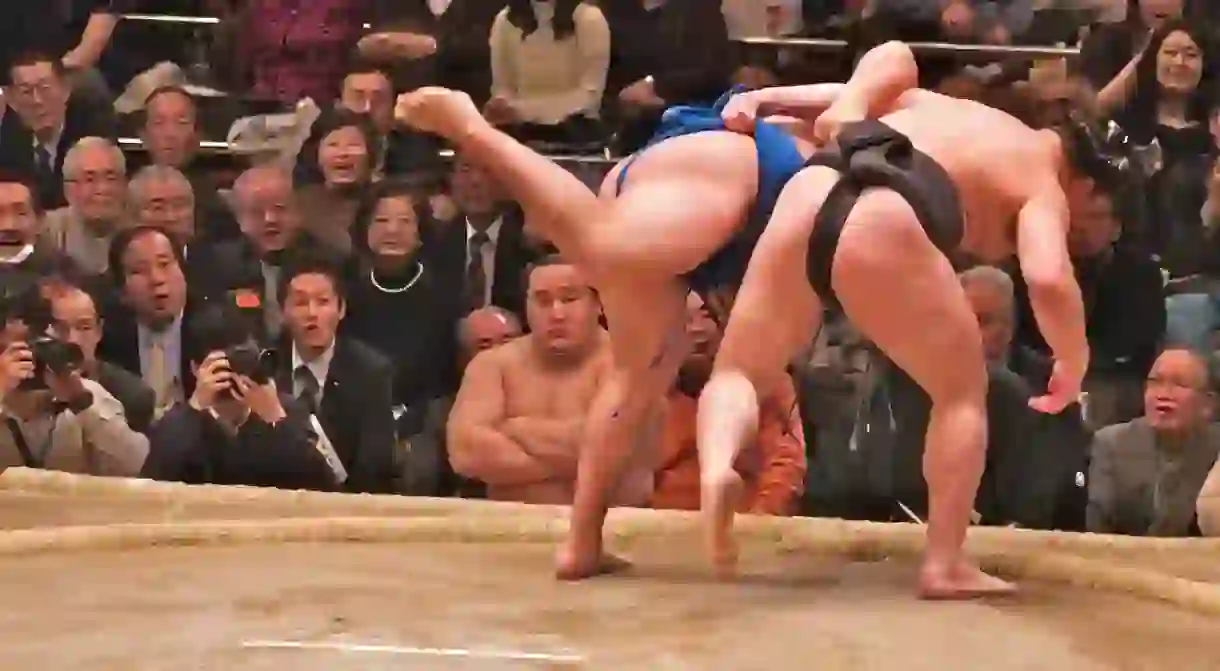Understanding the 6 Ranks of Professional Sumo

Sumo is still a widely enjoyed spectator sport in Japan with fans all over the country. However, the rules can be complicated, especially when it comes to rankings. Get ready to watch the next honbasho (official tournament) by acquainting yourself with the different divisions and ranks of professional sumo.
How it works
Wrestlers or rikishi are divided into 6 different divisions depending on their performance. They can be promoted to higher ranks when they perform well in tournaments, but they can also be demoted for poor performance, as well. Which division a wrestler is ranked in is important because it’s not only proof of his skill, but it determines his income, too. Even within the divisions, there is further hierarchical categorization. The prestigious title of yokozuna, for example, is the highest rank of the makuuchi division.

1. Jonokuchi
Sumo wrestlers start their careers in jonokuchi, the lowest division, after participating in at least one maezumo bout. It’s mostly made up of young hopefuls who aren’t considered professional yet. Experienced wrestlers can fall from the higher ranks, usually from dropping out of tournaments altogether due to prolonged illness or injury, but they’ll almost never be sent back to jonokuchi. It isn’t difficult to be promoted from jonokuchi and many wrestlers find themselves bumped up just to make room for the new recruits.

2. Jonidan
Jonidan-ranked wrestlers now have some experience, but only the best are promoted. That, combined with a no-cap policy on the number of wrestlers, leads to a bottleneck situation, making this division the largest of the six. They will still have to deal with hazing, and there are some restrictions on their clothing. Professional sumo wrestlers are required to wear traditional Japanese dress even outside of the ring, and those in the jonidan ranks aren’t permitted to wear haori (kimono jacket) even in the cold.

3. Sandanme
Wrestlers in sandanme are still not considered professionals. Like jonokuchi and jonidan, wrestlers instead receive a small allowance after each tournament in exchange for doing chores at the stable. For sandanme, this ends up being around the equivalent of 2,000 USD, plus prize money for winning bouts. The number of wrestlers in sandanme is capped at 200.

4. Makushita
Makushita is the final frontier between being an unranked wrestler without a salary to the prestigious sekitori (all ranks above makushita). It’s common for wrestlers from the higher ranks to fall to makushita, which is truly an unfortunate fate. They must go back to living on a small bi-monthly allowance and doing work around the training stable. Makushita and all the lower ranks compete only 7 times per tournament. Winning all 7 bouts as a makushita wrestler will have you promoted unconditionally to juryo, the next highest rank.

5. Juryo
Juryo-ranked wrestlers are now considered professional competitors. Wrestlers in the juryo and makuuchi divisions are known as sekitori. The average salary of a professionally ranked sekitori sumo wrestler is one million yen or 8,800 USD per month, plus additional perks and prize money. Juryo wrestlers compete 15 times per tournament, compared to the 7 bouts of the former ranks.

6. Makuuchi
Reaching makuuchi is the dream of all professional sumo wrestlers. It’s here the title holders or san’yaku are ranked, including yokozuna as the top rank, followed by ozeki, sekiwake and komusubi. More than one wrestler can hold these titles at a time, and the number of wrestlers in the makuuchi division is capped at 42. Makuuchi wrestlers receive a handsome salary and are also end up being the most famous, since their bouts are broadcast on regular television.














